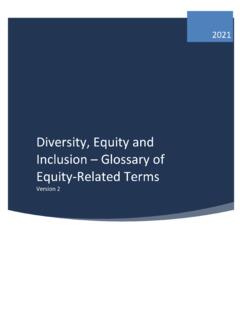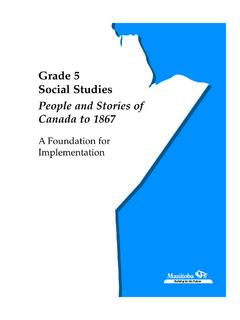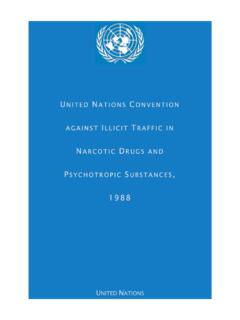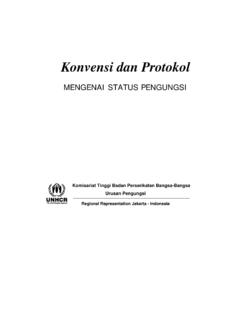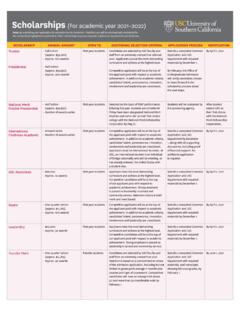Transcription of Judaism 101: A Brief Introduction to Judaism
1 Open Torah and Pointer Flickr upload bot ( ) Judaism 101: A Brief Introduction to Judaism Jennifer S. Abbott, 2014 TABLE OF CONTENTS Judaism : A Brief Introduction Karaite Judaism Rabbinic Judaism Conversion True Nature of God The Tanakh jewish Calendar Shabbat Holidays T filah (Prayer) Tikkun Olam (Repairing the World) Tzedakah (Charity) jewish History Resources Judaism : A Brief Introduction Judaism (in Hebrew: Yahadut) is the religion, philosophy and way of life of the jewish people. Judaism is a monotheistic religion, with its main inspiration being based on or found in the Tanakh which has been explored in later texts, such as the Talmud.
2 Judaism is considered to be the expression of the covenantal relationship God established with B nei Yisrael. Judaism is not a homogenous religion, and embraces a number of streams and views. Today, Rabbinic Judaism is the most numerous stream, and holds that God revealed his laws and commandments to Moses. Today, the largest jewish religious movements are Orthodox Judaism , Conservative/Masorti Judaism and Reform/Progressive Judaism . A major source of difference between these groups is their approach to jewish law. Orthodox Judaism maintains that the Torah and jewish law are divine in origin, eternal and unalterable, and that they should be strictly followed.
3 Conservative and Reform Judaism are more liberal, with Conservative Judaism generally promoting a more traditional interpretation of Judaism s requirements than Reform Judaism . A typical Reform position is that jewish law should be viewed as a set of general guidelines rather than as a set of restrictions and obligations whose observance is required of all Jews. However it must be realized that there is a great amount of variance within each of these movements and they are not monolithic. Authority on theological and legal matters is not vested in any one person or organization, but in the sacred texts and rabbis and scholars who interpret The very idea of jewish denominationalism is contested by some Jews and jewish organizations, which consider themselves to be trans-denominational or post-denominational such as: jewish day schools, both primary and secondary, lacking affiliation with any one movement.
4 The International federation of Rabbis (IFR), a non-denominational rabbinical organization for rabbis of all movements and backgrounds; and The Hebrew College seminary, in Newton Centre, Massachusetts, near Boston. Organizations such as these believe that the formal divisions that have arisen among the denominations in contemporary jewish history are unnecessarily divisive, as well as religiously and intellectually simplistic. According to Rachel Rosenthal, the post-denominational Jew refuses to be labeled or categorized in a religion that thrives on stereotypes.
5 He has seen what the institutional branches of Judaism have to offer and believes that a better Judaism can be created. Such Jews might, out of necessity, affiliate with a synagogue associated with a particular movement, but their own personal jewish ideology is often shaped by a variety of influences from more than one 1 Judaism . Wikipedia, [ ] 2 jewish Religious Movements. Wikipedia, [ #Emergence_of_trans-_and_post-denominati onal_Judaism] Karaite Judaism According to the followers of Karaite Judaism , it is the original form of Judaism as shown throughout the Tanakh from the time of the Revelation beginning at Har Sinai.
6 Karaites are a sect of Judaism that believes only in the authority of the Tanakh. Karaite Judaism truly began with the national revelation at Har Sinai. Those who followed God s laws were at first called Righteous. 1 Do not take bribes, for bribes blind the clear-sighted and upset the pleas of those who are in the right. [tzadek]. (Shemot 23:8)2 It was really only in the ninth-century CE that the followers of God s law began being called Yahadit Qara it. At first, everyone who followed Torah were of one mind and one sect that of the Yahadit Qara it.
7 Throughout jewish history a variety of sects such as the Sadducees, Boethusians, Ananites, and Pharisees came into existence. It was in this atmosphere that the followers of Torah became known as the Yahadit Qara At the end of the Biblical period in the first century BCE two opposing sects came into being in Yisrael. The Sadducees (also known as the Zadokites) followed only the Torah as sacred text. Josephus explains that the Sadducees take away fate, and say there is no such thing, and that the events of human affairs are not at its disposal; but they suppose that all our actions are in our own power, so that we are ourselves the causes of what is good, and receive what is evil from our own folly.
8 3 The Pharisees taught of an Oral Torah that was added to the Written Torah. This sect taught that some actions, but not all, are the work of fate, and some of them are in our own power, and that they are liable to fate, but are not caused by fate. 3 Two additional sects arose during the Second Temple Period the Essenes and the Boethusians. The Essenes was a sect of Judaism that added several books to the Torah. They taught that fate governs all things, and that nothing befalls men but what is according to its determination.
9 3 The Boethusians were a sect like the Sadducees who only follow the Written Torah and rejected any additions to the mitzvot given to Moshe In the early Middle-Ages the Pharisees continued to thrive and began calling themselves Rabbis. In the seventh-century the Muslims completely swept the Middle-East. They had no real interest in imposing Islam on the Jews and gave them a degree of autonomy under a system of Rosh Galut, also known by the Greek name Exilarch. With the establishment of the Rosh Galut, the Rabbinates became a political power throughout the Middle-East.
10 They began to force upon all Jews within the Empire the Rabbinate laws contained within the Talmud Bavli. There was fierce resistance to the Rabbinates by those who had never heard of the Talmud Bavli. One resistance leader, Abu Isa al-Isfahani, led an army of Jews against the Muslim government. However all attempts to cast off the Rabbinate rulers In the eighth-century, Anan ben-David organized various non-Talmudic jewish groups and lobbied the Caliphate to establish a second Rosh Galut for those Jews who refused to follow the man-made laws of the Talmud Bavli.

